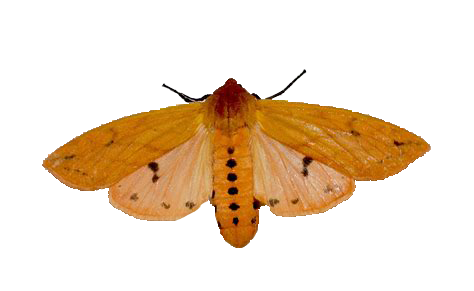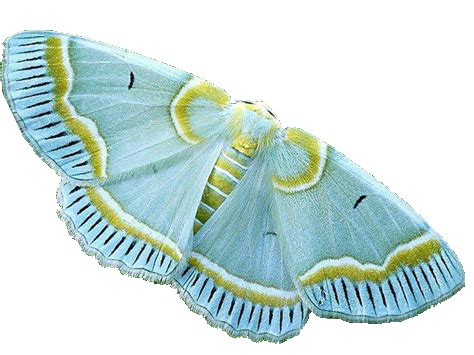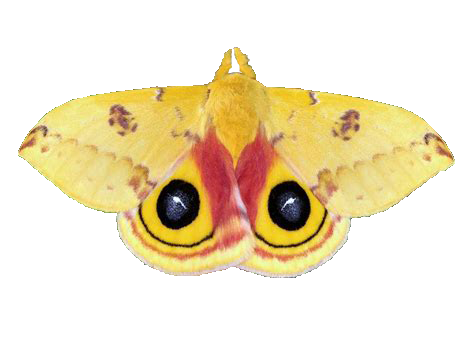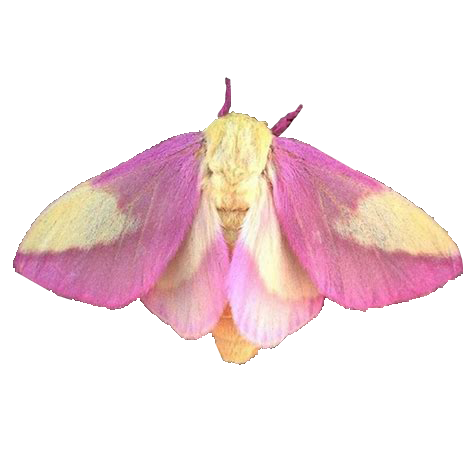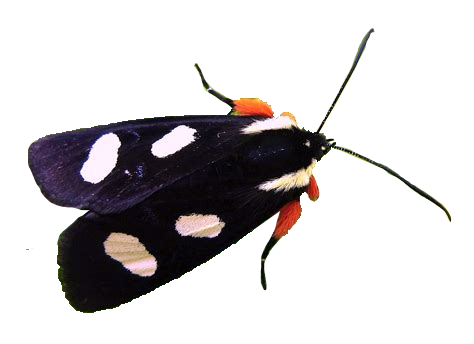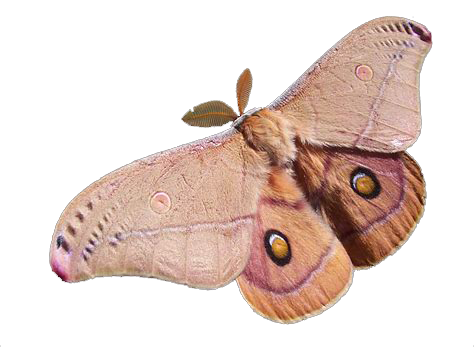Text

"The book of laws shatters."
Tower of Heaven fan art :)
#game#games#videogames#towerofheaven#retro#retro gaming#tower of heaven#pixel#pixel art#digital#digital art
4 notes
·
View notes
Text
Today's bug: Tailless whip scorpion!
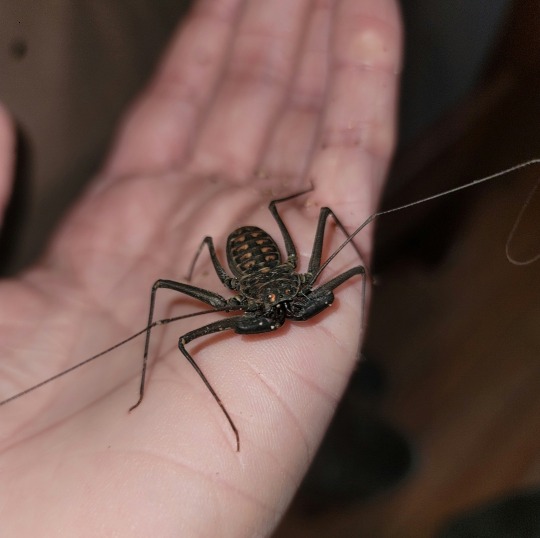
Sorry I haven't been active for so long.. anyways I got a new pet today - this female tailless whip scorpion (likely Phrynus whitei), so I'll tell you about them!
Tailless whip scorpions are arachnids in the Order Amblypygi (am-BLIP-idge-eye) and they're quite ancient! They even look a bit prehistoric, I think. There's about 150 species of tailless whip scorpion.
Adapted for crawling around dark forests and cave walls, these arthropods are nearly blind - their simple eyes giving them only vague information, like the level of surrounding light. That's where their loooong 2nd pair of legs come in!
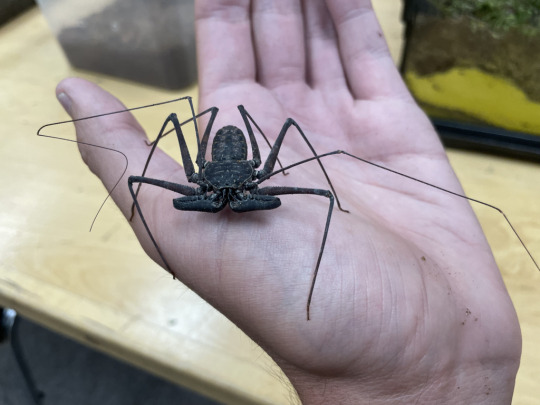
(image source: Wikimedia)
See those long "whips" from which they get their name? Those are for feeling their surroundings. When active, they'll be constantly moving around them around to sense their environment. The whips are very fragile and can break easily, but can be regrown every molt!

(image source: Frank Deschandol on iNaturalist)
Tailless whip scorpions are NOT scorpions, nor are they spiders. And those terrifying front claws aren't legs either - they're heavily modified mouthparts, pedipalps to be precise. Speaking of scorpions, their grabby claws are also their pedipalps! In spiders, these are those cute little appendages right next to the chelicerae (the things that have the fangs).
Unlike both scorpions and spiders, however, a tailless whip scorpion cannot bite or sting. They're almost totally harmless! Practically the posterchild for "don't judge a book by its cover," these are some of the friendliest arachnids in the world. You have to seriously to make one angry (which is basically abuse, so don't do that), and even then they'll only try smacking you with their thorny pedipalps, never biting with their fangs.

About the only truly scary part of handling them (once you get past their appearance) is their speed. These things normally move very slowly (on account of the "blind and has to touch everything" thing), but if startled, they'll bolt in the opposite direction with incredible speed! They really, really would rather not confront you at all. I cannot emphasize enough how completely NOT dangerous these arachnids are, despite their look!
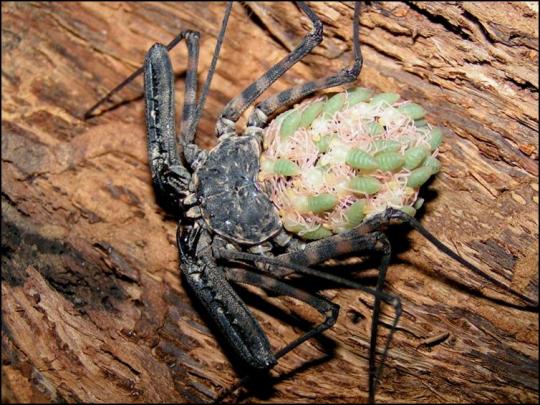
(image source: Jonathan's Jungle Roadshow)
Btw, did you know the mommas make great parents? Like many other large arachnids, the mothers will take their young with them until they're large enough to hunt on their own. They hatch from an egg pouch carried on the underside of the abdomen, which looks absolutely alien - in the source for the above image, you can find pictures of the whole process.
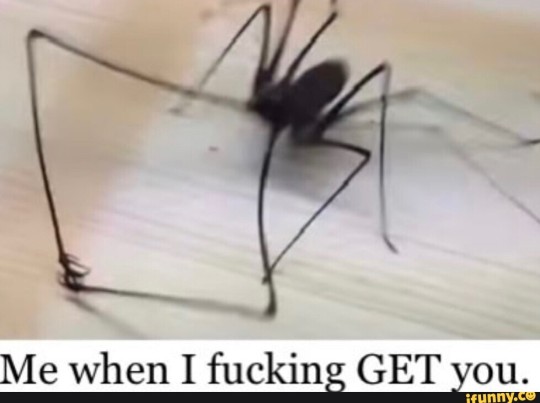
You may have seen this meme ^ Their pedipalps, usually folded up, can also unfold to catch prey or defend themselves (in the original video for this pic, the owner is provoking this reaction - something I don't condone, even if it showcases their grab ability very well). Tailless whip scorpions are carnivores, and the prey they catch are usually small insects like crickets or flies.
Tailless whip scorpions are found in almost every warm, tropical part of the world - Central/South America, Africa, Asia, and even some islands like the Phillipines!
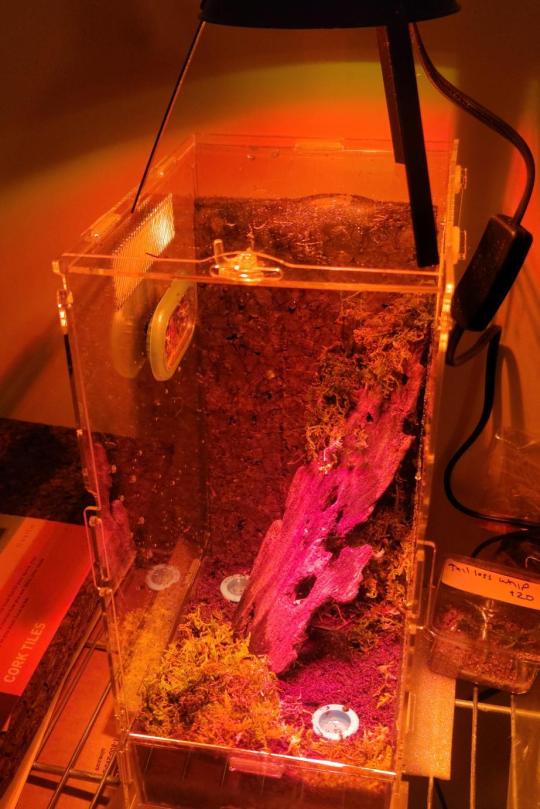
Here's my t.w.s.' habitat. They're very easy pets to take care of! Just make sure you have a habitat that favors verticality - they need to be able to climb to feel at home! Cork board is best, either just on the back, or 2-3 sides of the enclosure. Humidity is a must, so have the base be filled with cocofiber, then add water and perhaps a heating pad set on low to maintain moisture. Moss helps too! All that's left is to feed them - just once or twice a month is enough.
The light on my display is too hot, and heats up the plastic really quickly, so I only use it briefly to find and observe her. They don't actually need light since they're used to being in the dark!
I hope you liked these facts on tailless whip scorpions. If you know more facts, lmk or just add it to the post! I'm still learning things myself - like for example, you can tell males/females apart by the size of their pedipalps (the males have reaaaally long pedipalps, like the one in that meme, the females have much shorter ones).
#bugs#bug#nature#insect#insects#entymology#forest#zoology#arachnid#arachnids#spiders#spider#whip scorpion#tailless whip scorpion#creepy
10 notes
·
View notes
Photo
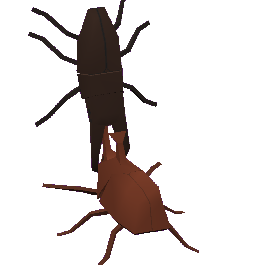
Beetle Fight from Katamari Damacy
38K notes
·
View notes
Text
232K notes
·
View notes
Text
This is a Yellow Garden Spider (likely Argiope aurantia) and as you can see it's very friendly! I let this one walk onto my hand from its web making sure not to harm the web itself. After taking some photos, I put it back. I saved these 2 pictures.
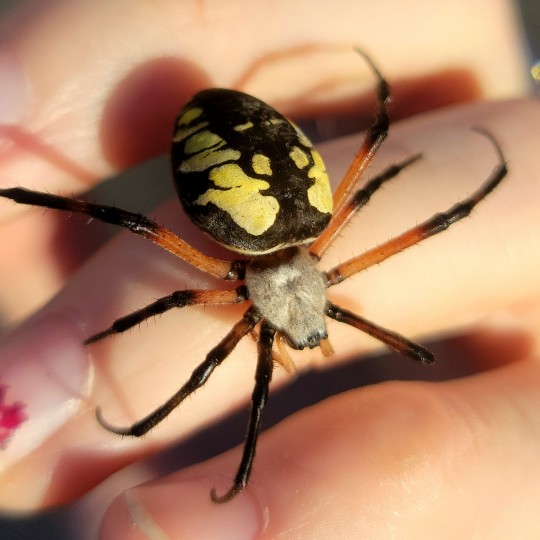
The term "Garden Spider" largely refers to spiders in the Families Araneidae and Uloboridae. They're also sometimes called Writing spiders or Zipper spiders. They are, of course, common in gardens and fields where people tend to plant things. So are many other kinds of spiders, but these in particular stand out due to their size, bright colors, and webs.
Like most spiders in your garden, they're harmless, friendly, and beneficial to have around. I wouldn't recommend trying to pick one up just for fun - I let this one walk on to my hand itself, and am using these photos for educational purposes. But, they are fun enough to just look at and watch, I think!
There are also many unique traits they have that separate them from your "typical" web-spinning spider. I don't have a picture to show you, but look up "writing spider webs" if you're interested!

What about them is so special? Well, assuming you just looked at pictures of their webs, there's a reason they're called Writing (or Zipper) spiders.
The thicker silk stands on a Garden spider's web are called Stabilimenta, but we're not really sure what their purpose is. It was initially thought they were to support the rather large spider, but their webs can still hold up even when the Stabilimenta are cut. The leading hypothesis is that they repel birds - the thicker web is easier to see, and so birds will notice it and NOT fly through the web, wrecking all the spider's hard work. Likewise, birds don't seem to prey on these spiders, meaning the extra attention is entirely welcome for the spider.
They probably don't want their webs wrecked more than other spiders, too, because they don't deconstruct them. Many outdoor spiders move often - eating up and rebuilding their web somewhere new - sometimes as often as every night! Zipper spiders rarely move their web unless it's an emergency, or a matter of catching more food. As such, building their webs is costly in terms of silk and energy, so they might've evolved the Stabilimenta to ensure their web's longevity.
As a closing note, they are not dangerous at all. People have been dumber than birds before and walked head-first into the webs of these spiders, but even then, they don't bite. Even if they did, their venom is mild, and you probably won't even notice you've been bit until a light rash forms later.
Most of the time, they will build their webs out of the paths of larger animals (that's you!), and even if they do, it's not going to hurt you. It's best to leave them there, too, since they'll eat pests for you. If you're planting things and see one of these spiders, consider yourself lucky. They are colorful and gentle defenders of your plants who simply wish to coexist with you peacefully.
#bugs#bug#nature#insect#insects#entomology#forest#entymology#invertebrates#photography#spider#spiders#garden#arachnid#arachnids#bug facts#the creature#garden spider
308 notes
·
View notes
Text
Dragonflies!!

Dragonflies are some of Earth's most efficient and fastest predators. When it comes to aerial maneuverability, nothing matches the dragonfly - not even flies, which are known for their reaction times! What makes dragonflies such agile hunters?
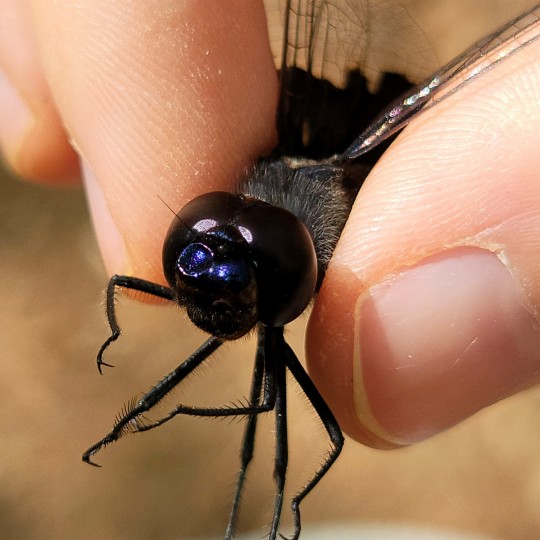
For one, their eyesight is among the best in the insect world. Nearly full 360 degree vision with dense compound eyes that show the world in high detail. The eyes are connected directly to the central nerve cluster allowing for near-instant reaction times and flight adjustment.

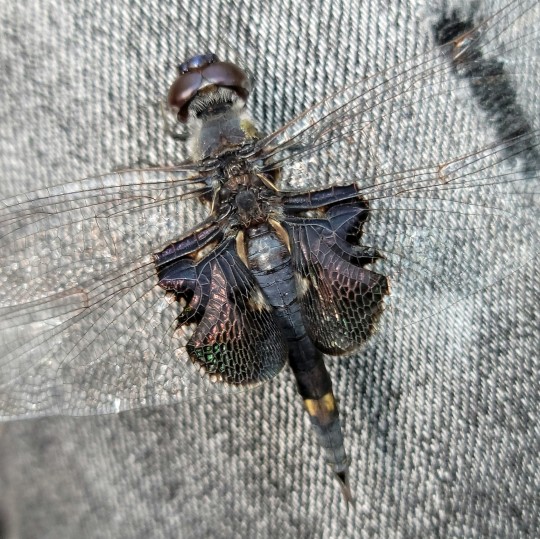
Their broad and aerodynamic wings can each move independently of one another, allowing for complete control over their movements. And more importantly, their signature ability to hover - which actually inspired modern helicopter designs.
While the fastest insect ever recorded was a tiny fly capable of briefly reaching 99mph during takeoff, dragonflies are the fastest insects on average, being able to maintain speeds of over 20mph consistently. The fastest dragonflies can reach 35mph when pursuing prey!
They can maintain these speeds while turning or changing altitude as well. In the wild, it's impressive if a predator has a 40% or higher catch rate of prey. Dragonflies, on the other hand, have a rate around 90%, the highest of any predator on Earth.
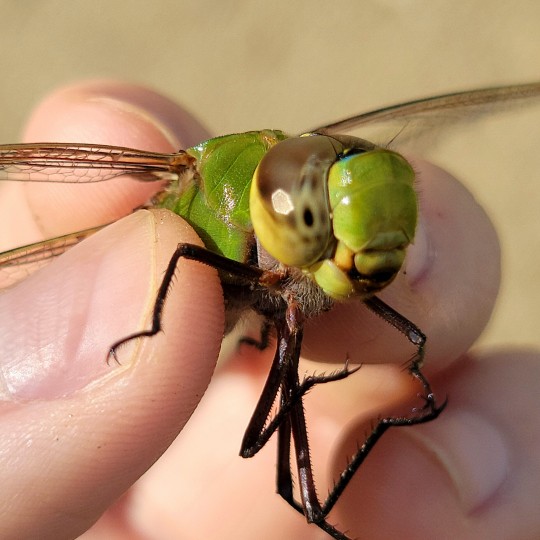
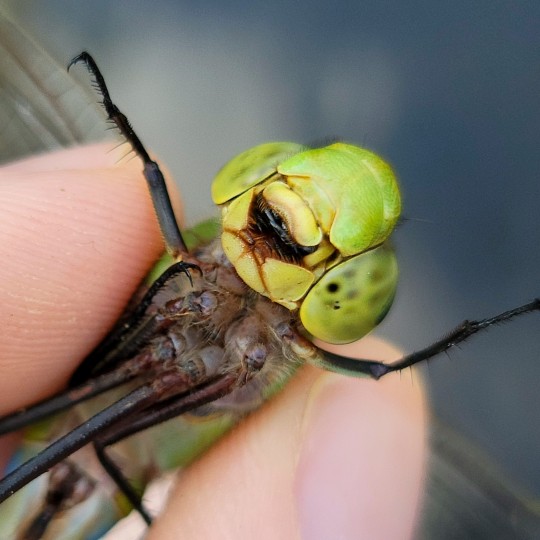
Once prey is caught, their powerful mandibles tear them to shreds mid-air. These pictures here are of a green darner (or an emperor dragonfly, not sure), one of the larger species of dragonfly. Their bite is painful even to humans and can easily draw blood.
Don't worry though - dragonflies have no interest in attacking humans. Their prey is just about anything smaller than them - fish, reptiles, flies, beetles... it doesn't matter, as long as the dragonfly can catch and lift it.
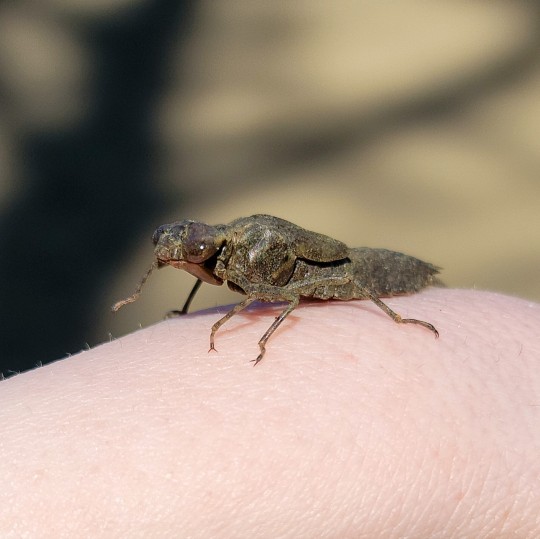
One of the coolest traits about dragonflies, in my opinion however, is their life cycle. Dragonflies start out as "nymphs," which look like freakish alien predators. They live underwater, where they feed on tiny insects - namely mosquito larvae!
That's right - if you've heard that dragonflies help kill mosquitos, it's actually the nymphs doing most of the heavy lifting.

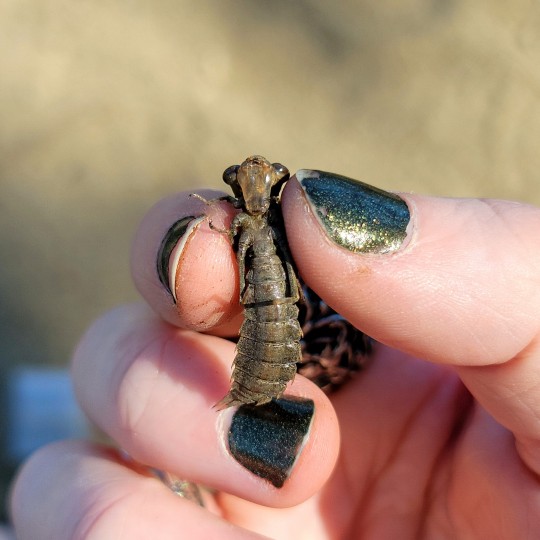
Here's some photos of a dragonfly nymph that was walking across a sandy outcrop on its way to become an adult. When they're ready and grown, they leave the water and find a good spot to shed. This is NOT metamorphosis like what butterflies do (called 'holometaboly'), but instead just it's final shed or molt, or "hemimetaboly."
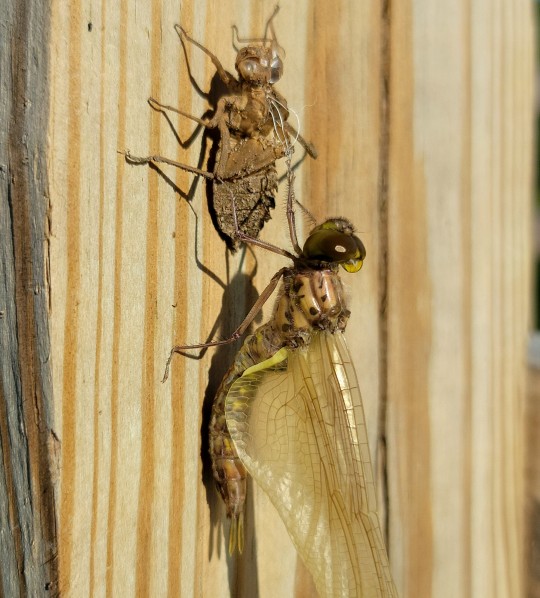
Dragonflies spend the majority of their lives in this state. Only for a brief month or two of their lives are they the flying, hunting adults you see flickering over pond surfaces.
Dragonflies live for about a year, and commonly have 2 or 3 generations per year. During the Winter, the adults all die out, entrusting their survival to the remaining nymphs trapped under the ice.
(all pictures by me)
#bugs#bug#nature#insect#insects#entomology#forest#entymology#invertebrates#photography#dragonfly#dragonflies
15 notes
·
View notes
Photo
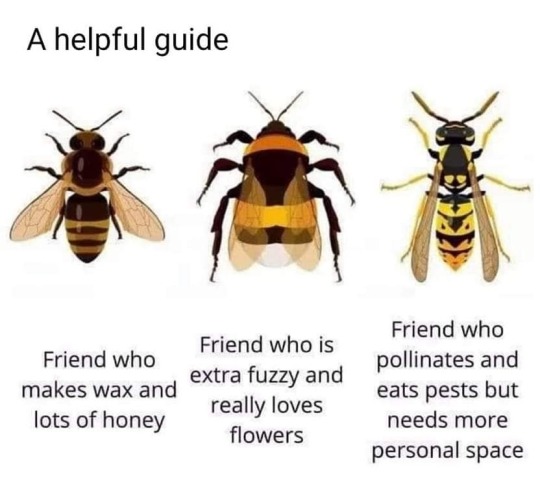
#I fucking hate these charts usually#its always like "friend :) friend :) ASSHOLE WHO STINGS ON SIGHT#they should be more like this one#bugs
28K notes
·
View notes
Text
Today's bug: The Giant Leopard Moth!

The Giant Leopard moth is actually... a tiger moth (family Arctiidae)! And like many tiger moths, they have some interesting traits.
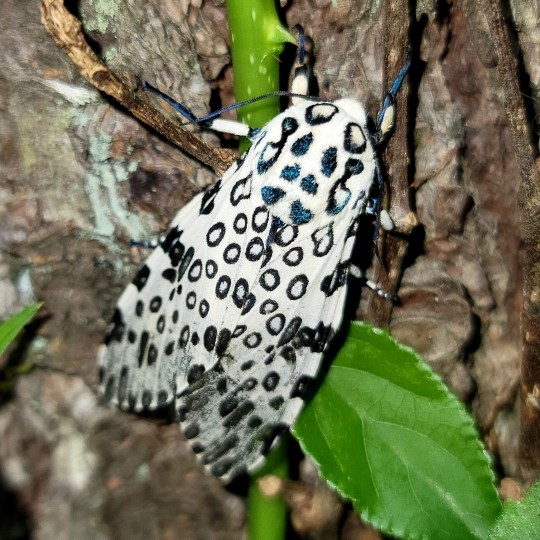
For starters, tiger moths have EARS. I couldn't get a picture because, well... you'd have to rip their wings off to see them! The ears are right behind where their wings start. It's believed the ears let them hear bat pings, giving them a head's up and some time to escape before they become bat food.
Most tiger moths also have abdominal 'tymbals,' which let's them make sound in a way similar to a cicada - though, it's more of a squeak than a scream. This squeak helps them avoid bats by effectively jamming a bat's echo-location - cool! ...However, Giant Leopard moths can't seem to squeak at all. Perhaps bats simply don't eat them enough to necessitate such an adaptation?
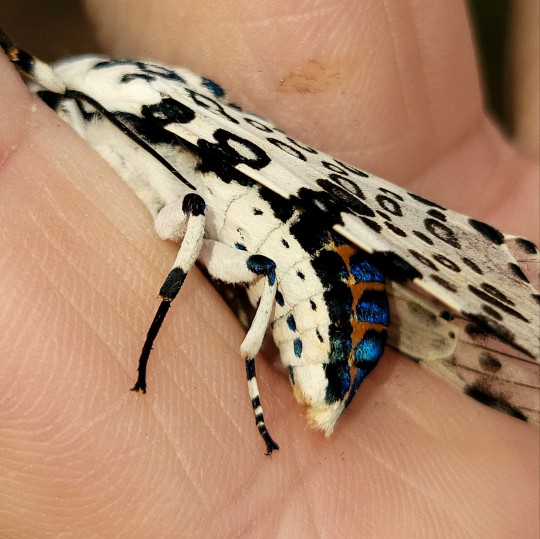
As another form of defense, when threatened, they'll curl their abdomen down. Many moths do this, seemingly just as a defensive position, but in Leopard moths, the bright colors may tell predators that they taste bad. Or simply confuse them.

Their larvae, sometimes called Wooly Bears (not to be confused with the more common Isabella Tiger moth), also have bright colors that you can only see when they curl up. While not poisonous, it's believed they also taste bad.
The larva's spines are not irritating or sharp, but rather designed to make them hard to grip. Pushing a spine pushes the caterpillar away, which due to them being covered in them, actually results in them feeling almost "slippery" to hold!

Giant Leopard moth mating is a long and tedious process, taking much longer than many other moth species. It may take a whole 24 hours for two adults to mate! The male, which is notably larger than the female, may also rub against the female's wings enough to cause scale loss (as I believe to be the case in this photo), which hinders her flight ability.

All-in-all though, this is a seriously beautiful moth. They can be found from the bottom of Canada, following the East coast through the Americas, all the way down to Panama. I would rank their rarity to be on-par with the Luna Moth - common enough to see maybe once or twice per Summer if you really look, but also very common in certain regions!
Like most medium-to-larger sized moths, they're pretty docile and it's not hard to let one onto your hand. The best way to do this is to gently slide your finger under their legs from the front, more "suggesting" that they get on, rather than forcing them to.
I highly recommend this moth. Super adorable (like all moths), but also striking at the same time!
(All photos taken by me).
#bug#bugs#nature#insect#insects#entomology#forest#entymology#invertebrates#photography#moth#moths#tiger moth#leopard moth#cute#bug friends#wildlife
15 notes
·
View notes
Text
Check out this little dude. This is a whirligig beetle!
They get their name (i think) from the way they love to rapidly swim around in circles. They're a common sight on the shores of any freshwater pond or lake in the Summer.
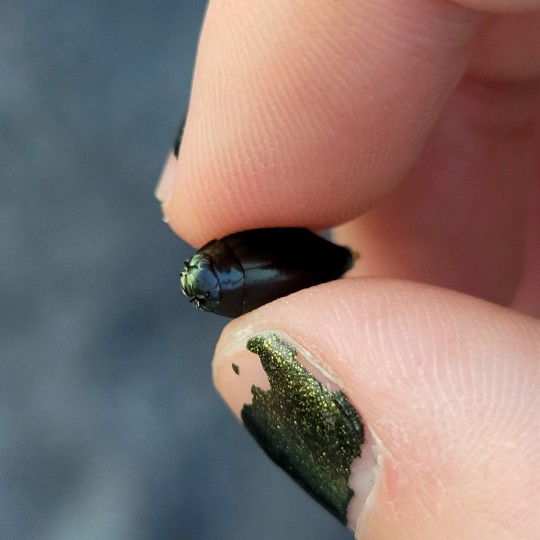
Their sleek, streamlined design serves a similar purpose as in diving beetles - to make them hydrodynamic (faster in the water). And they are quite fast swimmers! You'd be hard pressed to catch one without a net.
Here's a couple of them swimming! Look at that stroke! Little Olympic contenders! They even have a little "paddle" on their rear that helps them push through the water!
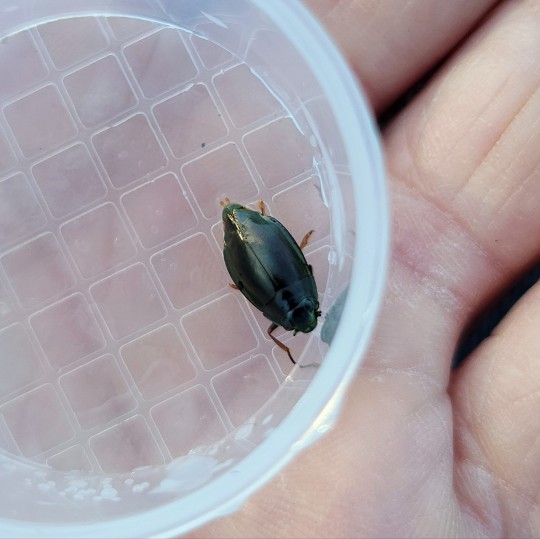

Their speed is mostly for evading predators. Their food sources aren't very fast - consisting mostly of water mites, snails, and small insect larvae. These guys, like dragonfly nymphs, help cut down on mosquito larvae, making them very beneficial!
But above all, I think the coolest thing about whirligig beetles is this:

Look closely - these beetles have FOUR EYES. Now, having more than 2 eyes is actually pretty common in the insect world. Many have 3 or more eyes. However, these "extra" eyes are usually small ocelli, or "simple eyes" that can't do much besides sensing the relative light level throughout the day.
Whirligig beetles have 4, real-deal, massive compound eyes that give them excellent vision. But why 4? It has to do with the fact that whirligigs swim on the exact surface of the water! Two of their eyes look above for predators, while the two on the bottom search for prey (and for other predators)!
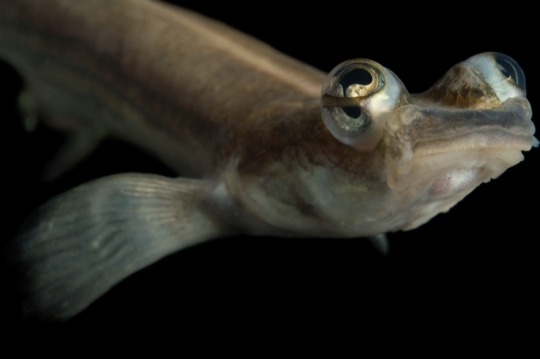
(image source: National Geographic)
This amazing adaptation is similar to the four-eyed fish. It only has 2 eyes, but each one has two pupils, giving it the same ability as the whirligig beetle!
Next time you're near a freshwater shore, look for these cool little swimmers. The beetles themselves might be a little tough to spot, but the swirling of water and subsequent ripples they make will make it obvious when they're around.
Hope you enjoyed these tid-bits about these bugs! It goes to show that even common insects can have mesmerizingly cool traits of their own!
#bug#bugs#nature#insect#insects#entomology#forest#entymology#invertebrates#photography#beetle#beetles#aquatic#freshwater#whirligig#pond#ecosystem
144 notes
·
View notes
Text
Today I'll be showcasing: The Rosy Maple moth! :)


This pastel moth is found in most parts of the Eastern US. It is very common in my home state of NY. The best time to see these guys is around the end of May to early June!
Rosy Maples start out as little green caterpillars, with light-green bands and black speckles. Their heads are bright orange/red, and they have two little black protrusions right behind the head.
However, the most striking thing about them is, of course, their colors as adults - bright pink and pastel yellow!

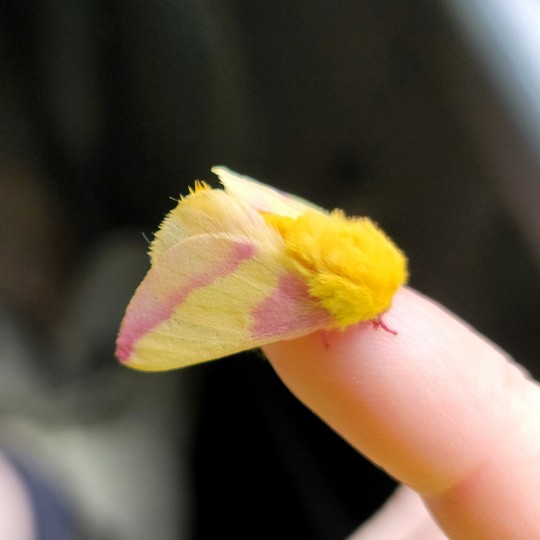
This is what gives them their name as the Rosy Maple moth. That, and their caterpillars like maple trees! Of course these moths look fluffy and cute, but isn't it kind of... obvious? When you're a moth, and your predators are most birds, the last thing you'd want to do is stand out, right?
There are 2 theories on why the Rosy Maple sports such extravagant colors. The first is that bright colors on insects usually means "I'm poisonous!" In the case of this moth, it isn't poisonous, but it may serve to fool birds into thinking it is.
However, what I think is a much more plausible theory, is that it's camouflage.
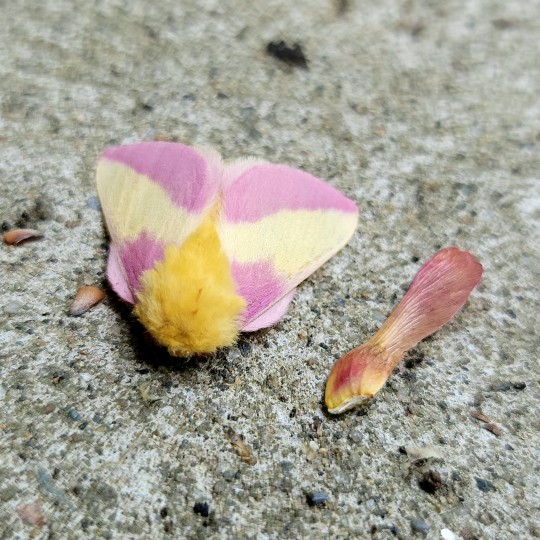

Rosy Maple moths don't just feed on maple trees, but the adults resemble the pink-and-yellow seedlings that twirl down from the tree tops! The moths emerge right as these seedlings take on their peachy colors, which is a pretty convincing argument that it's intentional mimicry.
Animals that are fooled into thinking they're seedlings would have no (or at least, less of a) reason to eat them.
Rosy Maples live for up to 8 months, although for the most of this time, they're in their pupal stage (cocoon) hibernating through Winter. The adults don't have very long to live, maybe a month at most, since they can't eat. The adults lack mouths (a trait surprisingly common in moths), and have only the energy they stored up as a caterpillar to go off of.
Next time you're in an area with these moths in the Summer, look on the walls and ceilings of outdoor buildings. They commonly gather in large groups.
They're safe to pick up, just be gentle. As far as moths go, they're pretty accepting of people and will stay on your hand if scooped gently onto it. You can even pet them a bit!
#bug#bugs#nature#insect#insects#entomology#forest#entymology#invertebrates#photography#rosy maple moth
19 notes
·
View notes
Photo
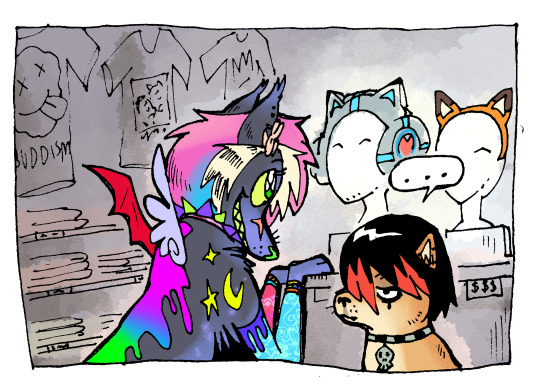




Norm and Sparklina: Mall Rats
Read on webtoons!
18K notes
·
View notes
Photo
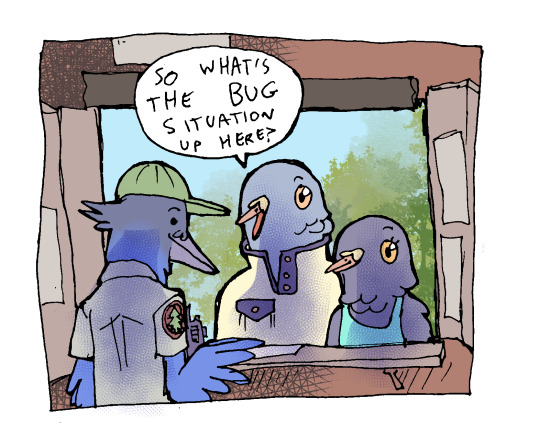
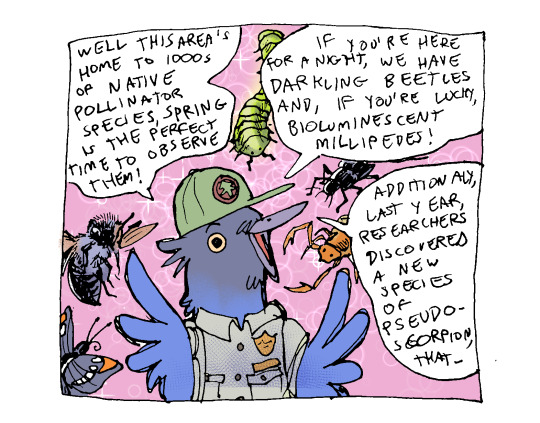
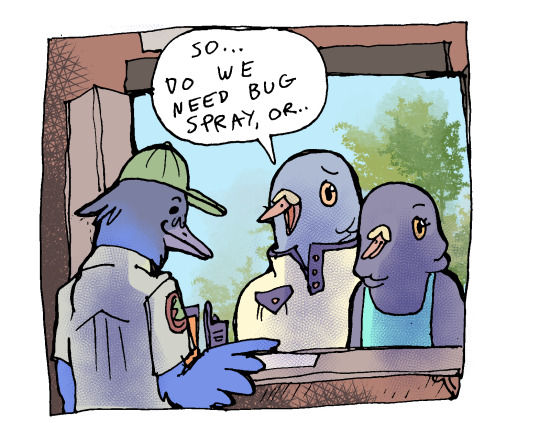

Support your local park rangers
61K notes
·
View notes
Text
The same night I found that diving beetle I also found DOZENS of these huge salamanders. I only took 2 to photograph and then release back. Behold! The creatures:
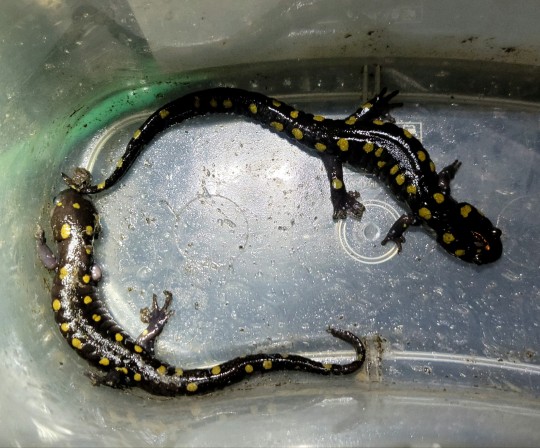
These are yellow-spotted salamanders! They are native to the eastern-most third of the US except Florida. They grow to be... very big (scientific fact).


Being amphibians, these salamanders start their lives in freshwater (often swampy) ponds, and don't stray far from the water even as adults. As such they are often gooey and slimy little creatures, and good swimmers. They probably eat bugs or something, I don't really know


One cool thing about these 'manders are their yellow spots. This is a huge middle-finger to predators, as it means they can ooze poison from their skin if something tries to eat or otherwise manhandle them. I was gentle with these little friends and thus did not get "oozed on" as the kids call it.
Note: You won't get hurt or sick even if you get "oozed on" by a yellow-spotted salamander, unless the ooze gets in a cut or something, or you stick your entire hand in your mouth (ew). Just wash your hands off and you'll be fine. These boys are safe to handle, just please but them back! They're sleepy, and also have families.
#bug#bugs#nature#forest#photography#lizard#lizards#king gizzard and the lizard wizard#yes I know theyre not lizards shut up#amphibian#amphibians#salamanders#there happy?
5 notes
·
View notes












